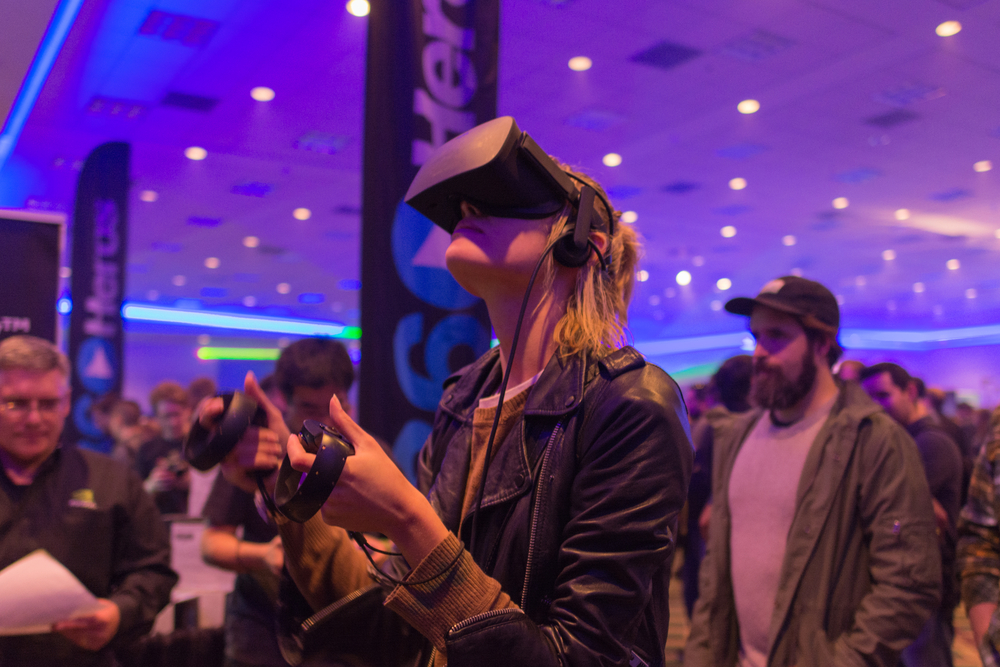Technology trends that will rock events in 2017
by HARALD MEYER-DELIUS
“The flight number 1515 to London has been delayed,” a barely decipherable female voice announced through the airport’s speaker.
With frustration, Diana looked at the time in her iWatch. Now I won’t make it in time for the keynote. The professor sighed in frustration and hid behind the ‘light reading’ novel she had brought along for the flight. There was nothing she could do now.
As Diana skimmed through the pages of the paperback, a signal left the device on her wrist and reached Matthew’s iPad. Instead of freaking out (he was a professional event planner, after all), he strategically reorganised the speakers timetables. Once he was satisfied with the new order, he saved the document and it automatically updated every speaker and attendant’s agenda. At the same time, the food truck informed its owner that they would need to buy more supplies.
This might sound like an episode of Black Mirror (or the wet dream of an obsessive compulsive organiser), but it is in fact the not so distant future. New technology like BLE, smartwatches and IoT will allow event organisers to engage with clients and attendees in ways that they never thought possible, even more than with promotional personalised clothing! And the good news is that it’s not far away! These developments are taking place right now and, in fact, will be all over in 2017.
Technology Trends for Events in 2017
AI Personal Assistants
Just about every major tech brand expanded their artificial intelligence personal assistants over the past year — including Google’s Assistant, Apple’s Siri and Amazon’s Alexa. That means you can certainly expect to see an expansion of what things these personal assistants offer and which situations they’ll be present in. Keep an eye out for ways they can help you streamline your event planning, as well as optimise the whole thing. AI just keeps getting smarter and smarter.
BLE and iBeacons
What once seemed like an invention from a science fiction novel is now reality. I’m talking about BLE and iBeacons technology. While not reaching Minority Report levels, this technology still allows you to watch over attendees’ every move. Apply it properly and you’ll be able to analyse people’s behaviour and react accordingly. What’s working? What’s not? Once upon a time we had to wait weeks after the fact to gather and analyse data, only to implement it on the next event. But with BLE and iBeacons you’ll be able to apply changes as things are happening.
Drones
Let me just ask you one question — do you know anybody who wouldn’t want a drone? Just stick a camera (GoPros are great) on one and you’ll get a birds’ eye perspective of the event. You can either stream so you can rub on people’s faces what they’re missing in real time, or film to use it afterwards as a reel for the amazing occasions you and/or your agency can organise.
OR you can get really creative and make a dead cat fly do things like have a dancing drone performance, deliver food and drinks (my dad warned me about robots taking our jobs one day!) or fly banners around.
OR you can get really creative and make a dead cat fly do things like have a dancing drone performance, deliver food and drinks (my dad warned me about robots taking our jobs one day!) or fly banners around.
Cognitive Devices
Rather than devices being termed “smart”, they’re now often called “cognitive”. And there are also a lot more of devices that are making the shift towards it, meaning they’ll be aware of the context they’re in and be able to sense information. On top of that, they’ll also have some form of ability to learn. You’ll probably see this start popping up everywhere from lighting to anything that measures data.
GIRL TRIES VIRTUAL REALITY AT AN EVENT
The Internet of Things (IoT)
Also known as IoT, is the name given to the interconnectivity between objects via a wireless network. It has the potential to turn any object into a “smart” object – and when I say “any” I do mean any object, refrigerators, toasters and why not? Wine bottles! For example, your wardrobe could be connected to your Google calendar and remind you to take that fancy suit to the cleaners because your spouse’s cousin’s wedding is coming up. If this sounds a bit too Stark Treky to you, let me say that you’ve been using an IoT device for a while now and probably haven’t even noticed – the ATM machine! It lets you draw and deposit money into your bank account without a person needed in between.
The IoT brings a world of possibilities to any industry and the event one is no exception. Imagine a venue that adapted its temperature in relation to the number of people inside of it, or a microphone that would gently remind a speaker to raise their voice because the people in the back can’t hear him/her.
Next-Level Mobile Apps
Apps really took off this year to engage with attendees and it’s easy to see why — they’re a great tool to let guests know what’s going on and build a sense of community. Not to mention that they also let you collect lots of data. Needless to say, they’ve been successful and in 2017 will only get more sophisticated.
Virtual Reality
WATER CUBE IN BEIJING BUILT FOR THE 2008 OLYMPICS
We might still be away from completely virtual conferences, but virtual reality can still be big plus to today’s events. Technology like the Oculus Rift and the much more affordable Google Cardboard can create an experience that just simply wouldn’t be possible in the physical world. Virtual Reality can be used to visualise 3D models, do a walkthrough, play games, and so much more in immersive ways.
Event venues are no longer just spaces
Because the cost of sensors has gotten so low they can now be placed in all kinds of environments to collect data. You’ll now be able to get ideas about rethinking your layout, figuring out where more signage might be needed or learning which hotspots are the best for placing an ad to reach a certain group of people.
Wearable technology
Wearable technology, like smart watches and the Cicret bracelet https://cicret.com/wordpress/, give event planners the opportunity to make guests and attendees lives a bit easier. Use them as admission tickets, an inbox to send important messages to, a GPS system, and many others. It is true that you could already do all of that with smartphones, but as this article points out, wearable technology is not here to replace smartphones, it’s here to complement them.
WI-FI
Have you heard of this amazing new thing that allows you to connect to the internet without a cable?
…
Are you still there? Ok, I was joking. I am aware that this isn’t the year 2000 and that Wi-Fi has been around for a quite a while now, but that’s precisely why the point I’m trying to make here is relevant. There’s no excuse for no Wi-Fi anymore. And free Wi-Fi, I might add. There’s no better way to kill a gathering than by not providing it. Go ahead, try it, and you’ll see how your attendees will run with their horror-stricken faces to the nearest Starbucks. It might be your first born’s christening, it doesn’t matter, they would still flee. Wi-Fi is a must – everywhere and at all times. And it had better be fast.



